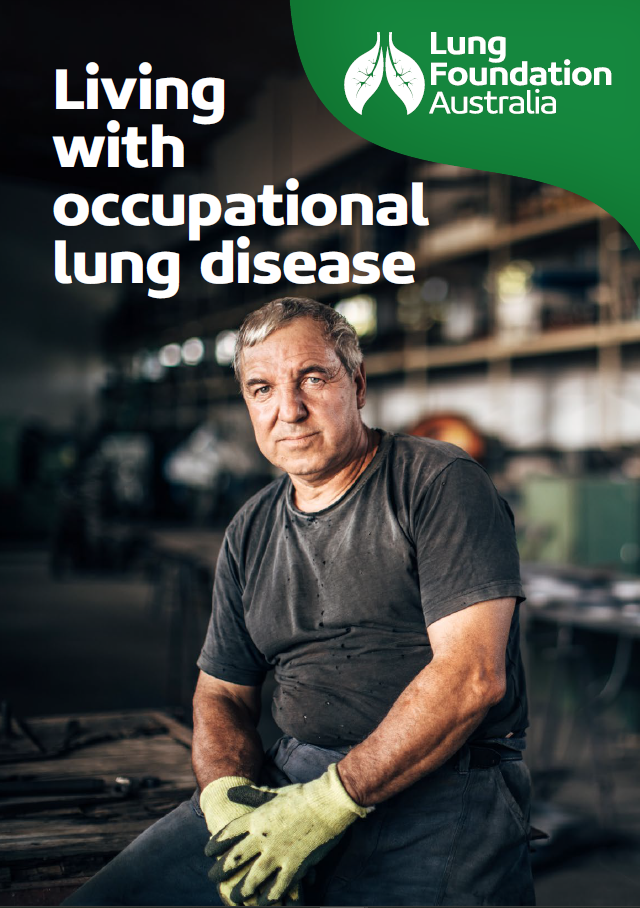Occupational lung diseases (OLD) are caused by inhaling dust, fumes, gases, or other hazardous agents in the workplace. This booklet provides essential information for individuals diagnosed with an OLD, their families, and carers. It has been designed to help you understand the different types of occupational lung diseases. This booklet is a general guide and does not replace information provided by your treating healthcare team: Information included is:
Types of Occupational Lung Diseases:
- Pneumoconiosis
- Asbestosis
- Silicosis
- Coal Worker’s Pneumoconiosis
- Chronic Obstructive Pulmonary Disease (COPD)
- Hypersensitivity Pneumonitis
- Mesothelioma
- Work-related Asthma
- Occupational Lung Infections
Symptoms and Diagnosis: Symptoms of OLD can vary but often include shortness of breath, cough, chest pain, and fatigue. Diagnosis typically involves imaging tests, and consultations with respiratory specialists. Health monitoring is another way diagnosis can be made.
Management and Treatment: Managing OLD focuses on slowing disease progression and improving quality of life.
Key strategies include:
• Medication: Anti-inflammatory drugs, bronchodilators, and corticosteroids.
• Pulmonary Rehabilitation: Exercise programs to enhance lung function.
• Oxygen Therapy: For patients with low blood oxygen levels.
• Lifestyle Changes: Quitting smoking, maintaining a healthy diet, and avoiding further exposure to hazardous agents.
Mental Health and Support: Living with OLD can impact mental health. Support from healthcare professionals, family, and friends is crucial. Lung Foundation Australia offers resources like support services which includes appointments with a nurse or social worker, peer support groups, educational webinars, and referrals to rehabilitation programs.
Legal and Financial Advice: Individuals with work-related lung diseases may be eligible for compensation. It is encouraged individuals seeking individual legal and financial advice.
Preventive Measures: Employers must ensure a safe working environment by implementing safety measures such as proper ventilation, protective equipment, and regular health monitoring. Employees should stay informed about workplace hazards and follow safety protocols.
Was this page helpful?
Good job! Please give your positive feedback
How could we improve this post? Please Help us.




